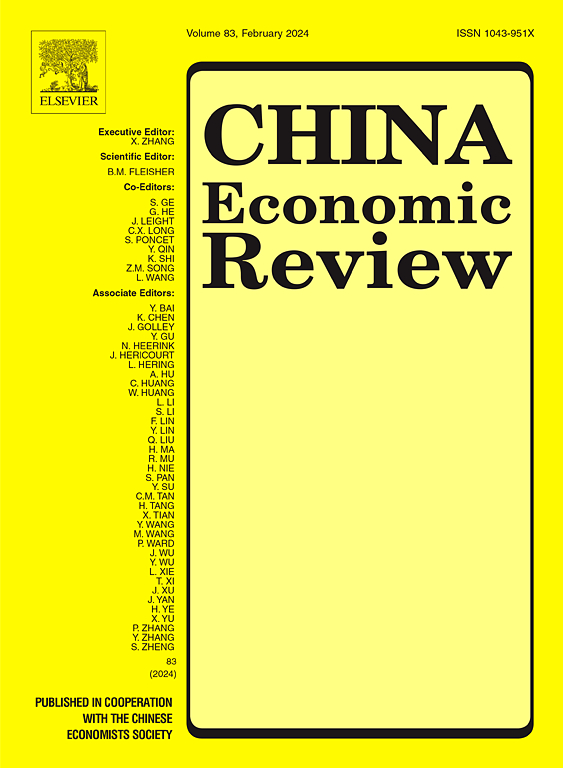The impact of intelligent automation on subjective well-being and job satisfaction: A comparison between standard and nonstandard employment
IF 5.5
1区 经济学
Q1 ECONOMICS
引用次数: 0
Abstract
The accelerating global adoption of intelligent automation (IA) technologies is fundamentally transforming economic structures and reshaping individual lifestyles. Despite intense debate regarding the societal impacts of IA, including both beneficial and adverse effects, empirical evidence on its net influence on multidimensional well-being outcomes remains scarce. Drawing on a nationally representative dataset from China (2018–2020), we employed multilevel probit models with instrumental variables to investigate how IA influences subjective well-being (SWB) and job satisfaction (JS), differentiating between standard and nonstandard employment contexts. Our findings revealed distinct nonlinear relationships: an inverted U-shaped pattern between IA and SWB, versus a U-shaped relationship between IA and JS, with turning points above the 35th and 80th percentiles of IA intensity distribution, respectively. These contrasting trajectories suggest that IA’s impacts vary considerably between consumption utility and production utility domains. The results demonstrate significant heterogeneity in the well-being effects of IA across different forms of employment. Specifically, within standard employment arrangements, IA exerts strong marginal diminishing effects on JS, though with an earlier turning point as IA intensity increases. Moreover, our counterfactual decomposition analysis verifies that IA contributes to narrowing the overall SWB and JS gaps between standard and nonstandard forms of employment by approximately 13% and 19%, respectively. Our mediation analysis identified three distinct transmission mechanisms — psychological factors, social interactions, and structural inequality — through which IA influences well-being, with mental exhaustion and actual inequality accounting for 38% and 30% of the total negative effect of IA on JS, respectively. These findings suggest that policy interventions would ensure balanced technological integration to maximize technology’s welfare benefits while mitigating its polarizing tendencies. This study provides important implications for understanding how technological transformation shapes human well-being across increasingly segmented global labor markets.
智能自动化对主观幸福感和工作满意度的影响:标准和非标准就业的比较
智能自动化(IA)技术的全球加速采用正在从根本上改变经济结构和重塑个人生活方式。尽管关于内部投资的社会影响(包括有益和不利影响)存在激烈争论,但关于其对多维福祉结果的净影响的经验证据仍然很少。利用中国(2018-2020)具有全国代表性的数据集,我们采用带有工具变量的多层次probit模型来研究IA如何影响主观幸福感(SWB)和工作满意度(JS),并区分标准和非标准就业环境。我们的研究结果揭示了明显的非线性关系:IA和SWB之间呈倒u型关系,而IA和JS之间呈u型关系,拐点分别高于IA强度分布的第35和第80百分位。这些对比轨迹表明,内部投资的影响在消费效用和生产效用领域之间差异很大。研究结果表明,在不同形式的就业中,内部投资对幸福感的影响存在显著的异质性。具体来说,在标准的就业安排中,IA对JS有很强的边际递减效应,尽管随着IA强度的增加,转折点会提前。此外,我们的反事实分解分析证实,IA有助于将标准和非标准就业形式之间的整体SWB和JS差距分别缩小约13%和19%。我们的中介分析确定了三种不同的传递机制——心理因素、社会互动和结构性不平等——IA通过这些机制影响幸福感,其中精神耗竭和实际不平等分别占IA对JS的总负面影响的38%和30%。这些研究结果表明,政策干预可以确保平衡的技术整合,以最大限度地提高技术的福利效益,同时减轻技术的两极分化趋势。这项研究为理解技术转型如何在日益分化的全球劳动力市场中塑造人类福祉提供了重要启示。
本文章由计算机程序翻译,如有差异,请以英文原文为准。
求助全文
约1分钟内获得全文
求助全文
来源期刊

中国经济评论
ECONOMICS-
CiteScore
10.60
自引率
4.40%
发文量
380
期刊介绍:
The China Economic Review publishes original works of scholarship which add to the knowledge of the economy of China and to economies as a discipline. We seek, in particular, papers dealing with policy, performance and institutional change. Empirical papers normally use a formal model, a data set, and standard statistical techniques. Submissions are subjected to double-blind peer review.
 求助内容:
求助内容: 应助结果提醒方式:
应助结果提醒方式:


